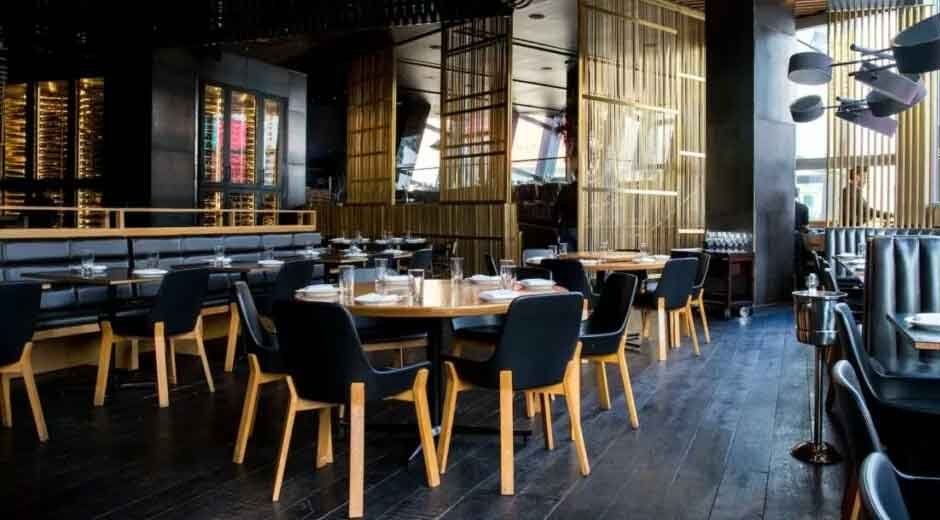Setting up a commercial restaurant involves more than great food and service—it requires a thoughtfully designed space that enhances customer experience and supports efficient operations. One of the most crucial elements in this setup is choosing the right restaurant furniture. Whether you’re opening a new place or upgrading your current layout, this guide walks you through the essentials of selecting and managing commercial restaurant furniture that’s both functional and appealing.
Understanding the Essentials of Commercial Restaurant Furniture
When planning your restaurant interior, start by identifying the core pieces of restaurant furniture you’ll need. These usually include dining tables, chairs, booths, bar stools, and sometimes waiting area seating or outdoor furniture, depending on your setup.
Your choices should reflect the type of restaurant you operate. Fine dining calls for elegant upholstered seating and polished wooden tables, while a fast-casual setup may prioritize stackable chairs and durable surfaces for quick turnover. Don’t forget back-of-house furniture such as prep tables and staff seating.
Every piece of commercial restaurant furniture must be commercial-grade—designed to withstand high traffic, frequent use, and rigorous cleaning routines. Investing in quality essentials from the start sets a strong foundation for a professional and customer-friendly environment.
How to Plan Layout and Spacing with Restaurant Furniture
Efficient space planning is a critical step in maximizing your restaurant’s potential. The placement of restaurant furniture affects customer comfort, employee movement, and even table turnover rates. Begin with a floor plan that considers both the available square footage and your desired seating capacity.
Follow industry spacing standards—leave 18 to 24 inches between chairs and at least 36 inches for service aisles. Make sure the flow between the kitchen, dining area, and restrooms is smooth and unobstructed. Use booths along walls to save space and place smaller tables in the center that can be easily combined for larger groups.
Proper furniture layout supports better service and creates a welcoming atmosphere. A well-organized floor also helps meet accessibility guidelines, improving safety and inclusivity for all guests.
Selecting the Right Materials for Long-Lasting Restaurant Furniture
Commercial restaurant furniture must be made from materials that can endure heavy daily use without deteriorating quickly. The material you choose will also influence the style, comfort, and maintenance needs of your furniture.
Wood brings a classic, upscale feel but may need more care. Metal, such as stainless steel or powder-coated iron, offers modern aesthetics with high durability. Laminate and MDF are budget-friendly for table tops and still stylish when finished well. For outdoor spaces, rattan, aluminum, and plastic composites resist weather and moisture.
Upholstered seating should be easy to clean—look for vinyl, leatherette, or treated fabric options. Ultimately, choose materials that align with your restaurant theme while standing up to constant use and cleaning products.
Durable materials reduce replacement costs and maintain your restaurant’s look over time.
Tips for Buying and Maintaining Commercial Restaurant Furniture
Purchasing restaurant furniture is a long-term investment, so it’s vital to make smart buying decisions. Always opt for commercial-grade products over residential furniture. Check weight capacity, joint strength, and whether surfaces are scratch- and stain-resistant.
Compare multiple vendors and ask for warranties. Buying in bulk often provides discounts, especially when furnishing large spaces. Consider sourcing from local manufacturers to save on delivery and gain easy access to after-sales service.
Once installed, regular maintenance is key. Wipe down surfaces daily, tighten bolts and screws monthly, and inspect for wear and tear. Use protective pads under furniture to avoid floor damage and train staff to handle pieces properly.
Taking care of your furniture ensures it looks great, performs well, and lasts for years—saving you from premature replacements and preserving your restaurant’s image.
Conclusion
Choosing and maintaining the right restaurant furniture plays a vital role in the success of your commercial dining space. From selecting durable materials and understanding your spatial needs to ensuring the layout enhances customer experience, every decision influences how your restaurant operates and feels.
Investing in well-built, stylish, and functional furniture sets the tone for your brand and impacts how customers perceive your business. With thoughtful planning, space optimization, and routine maintenance, you can create a dining area that is both inviting and efficient.
Remember, restaurant furniture is not just about aesthetics—it’s a strategic tool that supports workflow, maximizes capacity, and enhances guest satisfaction. Prioritize quality, comfort, and design, and your setup will serve your restaurant well for years to come.






